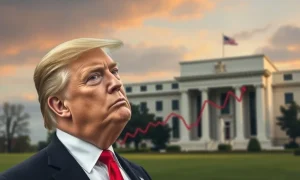Inflation alarm bells are ringing louder than ever. Businesses and consumers across the globe feel a significant pinch. Understanding **inflation** is crucial for navigating these challenging economic times. Prices are indeed rising, impacting everything from groceries to housing. This economic phenomenon erodes purchasing power, making every dollar buy less than before. Consequently, many individuals and entrepreneurs are asking: just how bad is it going to get? This article will explore the current state of inflation, its primary drivers, and its far-reaching consequences. We will also examine strategies for resilience and potential future scenarios.
Understanding Inflation: Why Your Money Buys Less
Firstly, what exactly is **inflation**? In simple terms, inflation represents the rate at which the general level of prices for goods and services is rising. Simultaneously, it means the purchasing power of currency is falling. For instance, if a basket of goods cost $100 last year, it might cost $105 this year due to inflation. This five-dollar increase reflects a 5% inflation rate. Consequently, your $100 buys less. Central banks typically aim for a low, stable inflation rate, often around 2%. This target promotes economic stability and growth. However, recent figures have significantly exceeded this benchmark, causing widespread concern. High inflation can destabilize economies. Therefore, understanding its mechanics is vital for everyone.
Several factors contribute to inflationary pressures. These can broadly be categorized into demand-pull and cost-push inflation. Demand-pull inflation occurs when aggregate demand in an economy outpaces aggregate supply. Essentially, too much money chases too few goods. Conversely, cost-push inflation arises from increased production costs. Businesses then pass these higher costs onto consumers. Both types can operate simultaneously, exacerbating the problem. Furthermore, expectations about future price increases can also fuel current inflation. People buy now, anticipating higher prices later. This behavior can create a self-fulfilling prophecy.
The Current Landscape of Rising Prices and Inflation
The recent surge in **inflation** is a global phenomenon. Many countries report multi-decade highs in consumer price indices. For example, the United States saw its inflation rate peak at over 9% in mid-2022. While it has moderated somewhat, it remains elevated above central bank targets. Similarly, the Eurozone and the UK have experienced significant price increases. This persistent rise in prices affects daily life for millions. Groceries, fuel, and housing costs have notably increased. Therefore, families find their budgets stretched thin. Businesses also face difficult decisions regarding pricing and profitability.
Consider the impact on various sectors. Energy prices, for instance, have seen significant volatility. Global events, like geopolitical conflicts, often disrupt supply chains. This disruption drives up the cost of oil and gas. Consequently, transportation costs rise for all goods. Food prices have also climbed steadily. Factors like adverse weather conditions and supply chain bottlenecks contribute to this trend. Housing markets also feel the heat. Rising interest rates, implemented to combat inflation, make mortgages more expensive. This impacts both homebuyers and renters. Ultimately, these widespread price increases highlight the pervasive nature of current inflation.
Key Drivers Behind the Recent Inflationary Surge
Understanding the root causes of this elevated **inflation** is critical. Several interconnected factors are at play. Firstly, the massive fiscal and monetary stimulus measures enacted during the COVID-19 pandemic injected vast sums of money into economies. This boosted consumer demand significantly. People had more money to spend, yet supply chains struggled to keep up. Secondly, global supply chain disruptions continue to pose challenges. Lockdowns in major manufacturing hubs, port congestion, and labor shortages impede the flow of goods. This creates scarcity and drives up prices.
Thirdly, energy price volatility plays a major role. Geopolitical tensions, particularly the conflict in Ukraine, have disrupted global energy markets. This has sent oil and natural gas prices soaring. Higher energy costs directly translate into higher production and transportation expenses for nearly all goods and services. Fourthly, labor market tightness contributes to wage inflation. Many sectors face worker shortages. To attract and retain employees, businesses offer higher wages. While beneficial for workers, these increased labor costs often get passed on to consumers through higher prices. Thus, a complex interplay of factors fuels the current inflationary environment.

Impact of Inflation on Your Finances and Investments
High **inflation** significantly impacts personal finances. Your savings lose value over time if interest rates do not keep pace with inflation. For instance, if your savings account yields 1% but inflation is 5%, your real return is negative 4%. This erodes your purchasing power. Furthermore, the cost of living rises. Everyday expenses, such as groceries, fuel, and utility bills, become more expensive. This forces households to adjust their budgets. Some may reduce discretionary spending. Others might dip into savings. Consequently, financial planning becomes more challenging.
Businesses also face unique challenges. They grapple with higher input costs for raw materials, labor, aned energy. This compresses profit margins. Companies must decide whether to absorb these costs or pass them on to consumers. Passing costs on can maintain profitability but risks reducing sales volume. Moreover, planning for the future becomes difficult. Unpredictable inflation rates make long-term investments and pricing strategies uncertain. For investors, inflation can erode the real returns on fixed-income assets like bonds. It can also make equity valuations appear less attractive. Therefore, investors often seek inflation-hedged assets, such as real estate or certain commodities.
Central Banks and Government Responses to Combat Inflation
Central banks globally are actively working to curb high **inflation**. Their primary tool is adjusting interest rates. By raising interest rates, central banks make borrowing more expensive. This discourages spending and investment. Higher rates also make saving more attractive. The goal is to cool down aggregate demand in the economy. This reduces the pressure on prices. However, raising interest rates too quickly risks triggering an economic slowdown or even a recession. Policymakers must carefully balance controlling inflation with maintaining economic growth.
Governments also employ fiscal policies to address inflation. These include changes in government spending and taxation. For example, reducing government spending can lower overall demand in the economy. Conversely, tax increases can reduce disposable income, further dampening demand. However, fiscal measures are often politically challenging to implement. They require legislative approval and can have significant social impacts. Therefore, a coordinated approach between monetary and fiscal policy is often necessary. These measures aim to restore price stability. They seek to bring inflation back to target levels over the medium term. Ultimately, effective policy responses are crucial.
Navigating Inflation: Strategies for Resilience
Individuals and businesses can adopt several strategies to navigate high **inflation**. For individuals, budgeting becomes paramount. Tracking expenses helps identify areas for potential savings. Consider delaying non-essential purchases. Moreover, investing in inflation-protected securities, like Treasury Inflation-Protected Securities (TIPS), can preserve purchasing power. Diversifying investment portfolios also helps. Assets like real estate or certain commodities historically perform well during inflationary periods. Additionally, focusing on increasing income, through skill development or career advancement, can help offset rising costs. Maintaining an emergency fund remains vital during uncertain economic times.
Businesses, too, must adapt. Firstly, focus on cost management. Review supply chains for efficiencies and explore alternative suppliers. Secondly, consider strategic pricing. Instead of broad price increases, implement targeted adjustments. Communicate value clearly to customers. Thirdly, invest in productivity improvements. Automation and technology can reduce labor costs and improve efficiency. Fourthly, manage inventory levels carefully. Holding too much inventory can be costly if demand drops. Holding too little can lead to missed sales. Finally, maintaining strong customer relationships is crucial. Loyal customers are more likely to accept necessary price adjustments. These proactive measures can help mitigate the adverse effects of inflation.
The Future Outlook for Inflation: What to Expect
Predicting the future trajectory of **inflation** remains complex. Many economists anticipate a gradual moderation. Supply chains are slowly normalizing. Energy prices, while volatile, have shown some signs of easing from their peaks. Central bank interest rate hikes are also working their way through economies. This tightening monetary policy should eventually cool demand. However, significant uncertainties persist. Geopolitical events could trigger new supply shocks. Strong labor markets might continue to push wages higher. Consumer spending patterns could also surprise economists.
There are several potential scenarios. A “soft landing” would see inflation gradually return to target levels without a severe recession. This is the ideal outcome. Alternatively, a “hard landing” or recession could occur if aggressive interest rate hikes stifle economic activity too much. Persistent high inflation, or “stagflation” (high inflation with stagnant economic growth), is another concern. This scenario presents significant challenges for policymakers. Ultimately, vigilance and adaptability will be key. Economic indicators will require close monitoring. The global economy remains in a delicate balance. Therefore, preparedness is essential for businesses and individuals alike.
Conclusion: Adapting to Persistent Inflation
The current period of elevated **inflation** presents significant challenges for economies worldwide. Understanding its causes, impacts, and potential future paths is crucial. While central banks and governments employ various tools to restore price stability, individuals and businesses must also take proactive steps. Adapting financial strategies, managing costs, and seeking productivity gains are vital for resilience. The economic landscape is dynamic. Therefore, staying informed and flexible will help navigate the ongoing pressures of rising prices. Ultimately, prudent planning and strategic adjustments empower stakeholders to withstand the effects of inflation. This prepares everyone for a more stable economic future.
Frequently Asked Questions (FAQs) About Inflation
Q1: What is the main cause of current inflation?
The current inflation is primarily caused by a combination of factors. These include strong consumer demand boosted by past stimulus, persistent global supply chain disruptions, and significant volatility in energy prices due to geopolitical events. Additionally, tight labor markets contribute to wage pressures.
Q2: How does inflation affect my personal savings?
Inflation erodes the purchasing power of your savings. If the interest rate you earn on your savings account is lower than the inflation rate, your money will buy less over time. For example, if inflation is 5% and your savings earn 1%, your real return is negative 4%.
Q3: What can businesses do to combat rising costs due to inflation?
Businesses can combat rising costs by focusing on cost management, exploring alternative suppliers, and implementing strategic pricing. Investing in productivity improvements through technology and automation can also help. Additionally, careful inventory management and strong customer relationships are crucial.
Q4: Will interest rate hikes fix inflation?
Interest rate hikes are a primary tool for central banks to combat inflation. They work by making borrowing more expensive, which cools down demand in the economy. While effective, there’s a risk of slowing economic growth too much. The full impact of rate hikes takes time to materialize.
Q5: Is there a difference between inflation and stagflation?
Yes, there is a key difference. Inflation refers to a general increase in prices. Stagflation, however, describes a period characterized by high inflation combined with stagnant economic growth and high unemployment. This combination is particularly challenging for policymakers to address.
Q6: How long is this period of high inflation expected to last?
The duration of high inflation is uncertain. Many economists anticipate a gradual moderation as supply chains normalize and central bank policies take effect. However, geopolitical events and labor market dynamics could influence the timeline. Vigilance and adaptability remain essential.
























